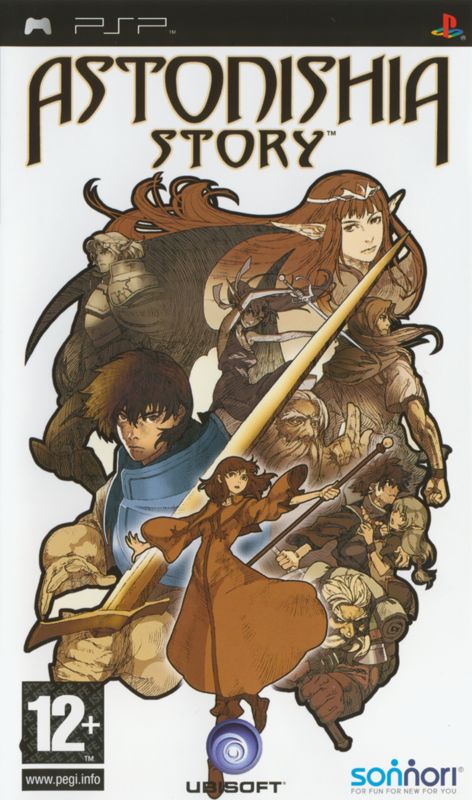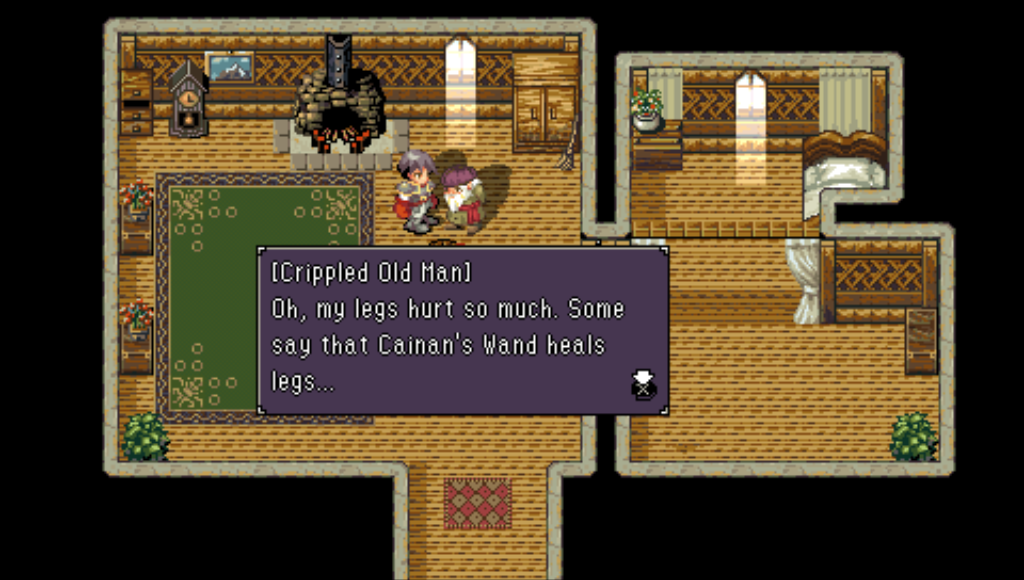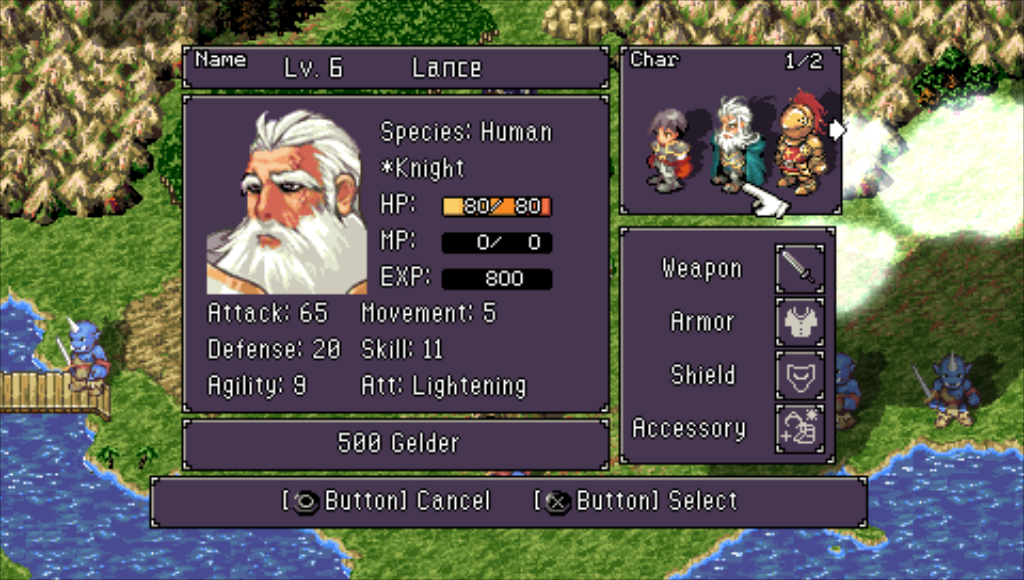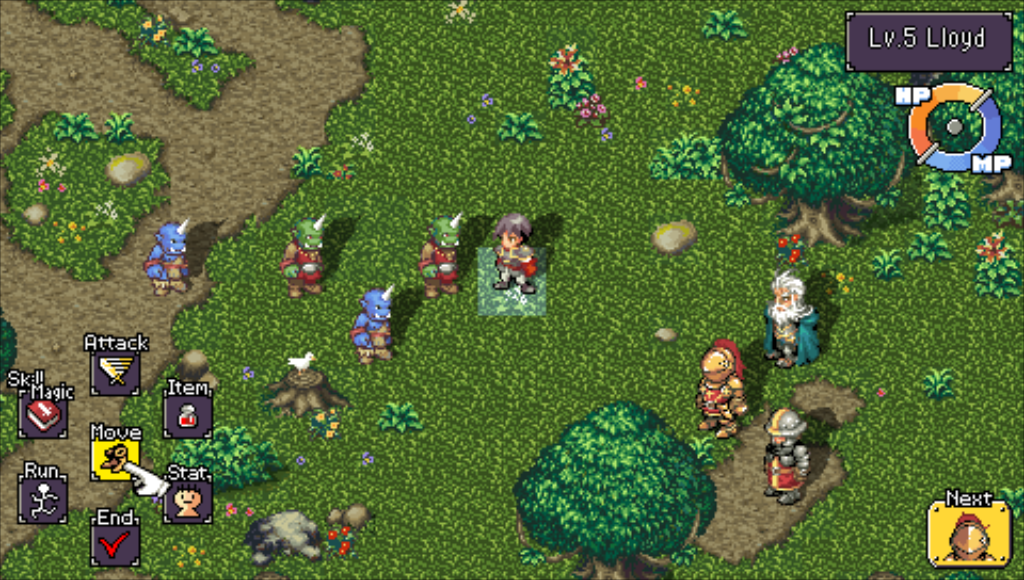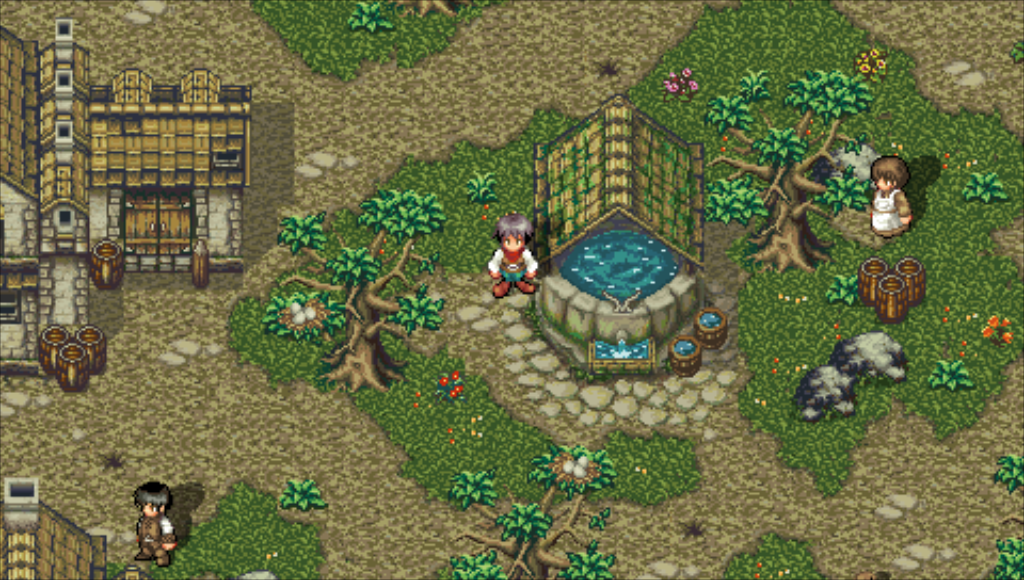ASTONISHIA STORY (PSP)
The PlayStation Portable would become something of a haven for RPGs, with prominent series such as Phantasy Star and Valkyria Chronicles finding new life on handhelds. A bounty of newcomers would also debut, with Astonishia Story finally seeing a Western release in 2006 after releasing on Korean computers in the 1990s. However, it might have been better left in the decade prior, as this story feels generic, suffers from unsatisfying combat and is beset by some noticeable translation issues, damaging an already underwhelming narrative. Despite perhaps providing some unintentional comedy, with so many better competitors on the system, the joke is on the players who sink any time into this dated role-playing game.
Astonishia Story centres around a knight, Sir Lloyd, who’s initially tasked with protecting a coveted staff alongside his comrades. Unfortunately, the springing of a trap sees the item taken and all but Lloyd wiped out, with even the protagonist stripped of his armour and left for dead. Now, the knight begins his journey across the land while recruiting warriors of human, elven and dwarven heritage. It is incredibly typical fantasy fare, with a group of main characters who lack depth and instead consist of archetypes. Lloyd himself is incredibly bland, referring to duty and honour to an almost robotic routine, while his companions barely fare better. Some are in the party so briefly, there’s no chance for any development. While a few characters do stand out, such as the raft of villains whose various motivations surround the main plot, it isn’t enough.
Astonishia Story centres around a knight, Sir Lloyd, who’s initially tasked with protecting a coveted staff alongside his comrades. Unfortunately, the springing of a trap sees the item taken and all but Lloyd wiped out, with even the protagonist stripped of his armour and left for dead. Now, the knight begins his journey across the land while recruiting warriors of human, elven and dwarven heritage. It is incredibly typical fantasy fare, with a group of main characters who lack depth and instead consist of archetypes. Lloyd himself is incredibly bland, referring to duty and honour to an almost robotic routine, while his companions barely fare better. Some are in the party so briefly, there’s no chance for any development. While a few characters do stand out, such as the raft of villains whose various motivations surround the main plot, it isn’t enough.
Astonishia Story is hamstrung by an unoriginal storyline populated with rote characters, though there are some nice visual moments
If you’re hoping the game world might make up for this, you’ll be sorely disappointed. The world map is garish, featuring the same handful of patrolling enemy orcs, even if the battles themselves lack these grunts, while the world is essentially created with two discernible palettes: desert and forest. The main towns are unremarkable, with a Dwarven village barely distinguishable from a human market town and featuring only a handful of enterable buildings. Dungeons are a notable offender for palette swapping, with dreary caverns changing from green to blue. There are a handful of side quests dotted around key towns, but they often feel underdeveloped and hardly worth the paltry reward, bar the legendary sword quest. Even for a JRPG with its origins in the 1990s, this is a cookie-cutter world for an equally flat story.
Combat, while functional, grows tiring as you progress. The party size changes frequently, sometimes seeing you trek alone as Lloyd while other parts of the story have multiple allies. Characters bear generic move sets: you get strikers, mages with elemental magic, healers and even a character who specialises in martial arts fisticuffs. You can move your character a certain distance, and when in range, you can perform either a strike or magic spell. You can wait your turn, which can be handy for letting your foes move closer to you, but doesn’t reward MP or HP gains for inactivity. Battlegrounds consist of only a handful of locations and feature barely any environmental objects. Some might have a set of stairs, or a tree to move around, but little else. There’s only a handful of enemy types too, with reskinned orcs taking up a large chunk of the battles. Outside of a few bosses, which can range on the cheap if you don’t grind beforehand, combat also proves rather easy. This all results in a toothless combat system.
Combat, while functional, grows tiring as you progress. The party size changes frequently, sometimes seeing you trek alone as Lloyd while other parts of the story have multiple allies. Characters bear generic move sets: you get strikers, mages with elemental magic, healers and even a character who specialises in martial arts fisticuffs. You can move your character a certain distance, and when in range, you can perform either a strike or magic spell. You can wait your turn, which can be handy for letting your foes move closer to you, but doesn’t reward MP or HP gains for inactivity. Battlegrounds consist of only a handful of locations and feature barely any environmental objects. Some might have a set of stairs, or a tree to move around, but little else. There’s only a handful of enemy types too, with reskinned orcs taking up a large chunk of the battles. Outside of a few bosses, which can range on the cheap if you don’t grind beforehand, combat also proves rather easy. This all results in a toothless combat system.
FOCAL POINT: LOST IN TRANSLATION
Perhaps one of the more infamous aspects of Astonishia Story is the English translation, which might stand as one of the worst the genre has seen. Dialogue often lacks punctuation and can make processing key speeches headache-inducing. Typos are rather prevalent too, including one of Lloyd’s specials being dubbed “Tripple Strike”. There is even inconsistency between the game itself and the outside material: while the blurb on the box mentions recovering the “Wand of Kinan”, in-game it is called “the staff of Cainan”. This disconnect is felt throughout the game, with the aforementioned errors damaging an already unremarkable narrative. While this version features a new anime intro, it feels like a poor trade for Ubisoft’s incredibly slapdash handling of the localisation.
Astonishia Story also feels lightweight from a content standpoint. Even if you explore off the beaten path, complete the handful of side quests and level up your characters, most will be lucky to break the twenty-hour mark, which is very short by genre standards. The only saving grace for morbidly curious players is the litany of missteps and a couple of oddball moments, including some moments where characters break the fourth wall, hinting at a satirical side. There are also some solid music tracks, including a tension-inducing boss theme. But ultimately, these feel like bright spots in an otherwise astonishingly generic adventure.
Astonishia Story ends up a poor RPG, one which proves hard to recommend especially compared to superior alternatives on the system. The botched translation might seem like the main culprit and in fairness, it makes following the story like watching Lord of the Rings with both your ears blocked. But even had Ubisoft’s localisation been pristine, this game feels so generic and undercooked that it would still be difficult to recommend. Short, missing any sort of unique hook and lacking a world worth investing in, it all makes for a dull adventure. Considering the superior alternatives you can find on this handheld alone, this one isn’t worth the time.
|
|
VERDICT
"Astonishia Story suffers from a lazy translation, but even had it have been realised, this RPG is so generic, short and undercooked, it would still be difficult to recommend." OVERALL: 4/10 |
PIXEL SECONDS: ASTONISHIA STORY (PSP)
One of the first RPGs to hail from South Korea, the rather optimistically-named Astonishia Story struggles with about as cliché-ridden a narrative and cast as you could hope to come across in a game. A lack of originality isn’t the story’s real blight however, more that it isn’t told with any conviction or creativity. On the surface, AS appears an acceptable copycat of the RPGs doing the rounds at the time of its original 1994 release, with attractive visuals and a solid game engine. However, extended play reveals the real meat and potatoes of the role-playing experience are decidedly absent. There’s almost nothing in the way of character development, and due to a poor English translation, attempts at humour and emotion are clumsy at best. It’s a shame, as this renders a serviceable game engine somewhat wasted. Whilst nothing special by the standards of 2006, the grid-based battle system is nice, adding a hint of a tactical element to the levelling-up process, without getting too heavy. The ability to save anywhere is useful for on-the-go gaming, whilst attractive presentation and simple but responsive controls make it an ideal fit for the PSP. The graphics are distinctly old-school, but appear tidy and sharp, whilst the bright and pretty villages are awash with nice touches. At just 15 hours long, it offers only a fraction of the playing time that most RPGs typically aim for. Inevitably, this proves detrimental to the depth of the experience. There are hardly any side-quests, just a few additional cut-scenes. Time hasn’t been kind to Astonishia Story, and RPG fans have come to expect more world-building and better scripting as standard. [4] – Tom Clare © 2023
One of the first RPGs to hail from South Korea, the rather optimistically-named Astonishia Story struggles with about as cliché-ridden a narrative and cast as you could hope to come across in a game. A lack of originality isn’t the story’s real blight however, more that it isn’t told with any conviction or creativity. On the surface, AS appears an acceptable copycat of the RPGs doing the rounds at the time of its original 1994 release, with attractive visuals and a solid game engine. However, extended play reveals the real meat and potatoes of the role-playing experience are decidedly absent. There’s almost nothing in the way of character development, and due to a poor English translation, attempts at humour and emotion are clumsy at best. It’s a shame, as this renders a serviceable game engine somewhat wasted. Whilst nothing special by the standards of 2006, the grid-based battle system is nice, adding a hint of a tactical element to the levelling-up process, without getting too heavy. The ability to save anywhere is useful for on-the-go gaming, whilst attractive presentation and simple but responsive controls make it an ideal fit for the PSP. The graphics are distinctly old-school, but appear tidy and sharp, whilst the bright and pretty villages are awash with nice touches. At just 15 hours long, it offers only a fraction of the playing time that most RPGs typically aim for. Inevitably, this proves detrimental to the depth of the experience. There are hardly any side-quests, just a few additional cut-scenes. Time hasn’t been kind to Astonishia Story, and RPG fans have come to expect more world-building and better scripting as standard. [4] – Tom Clare © 2023
